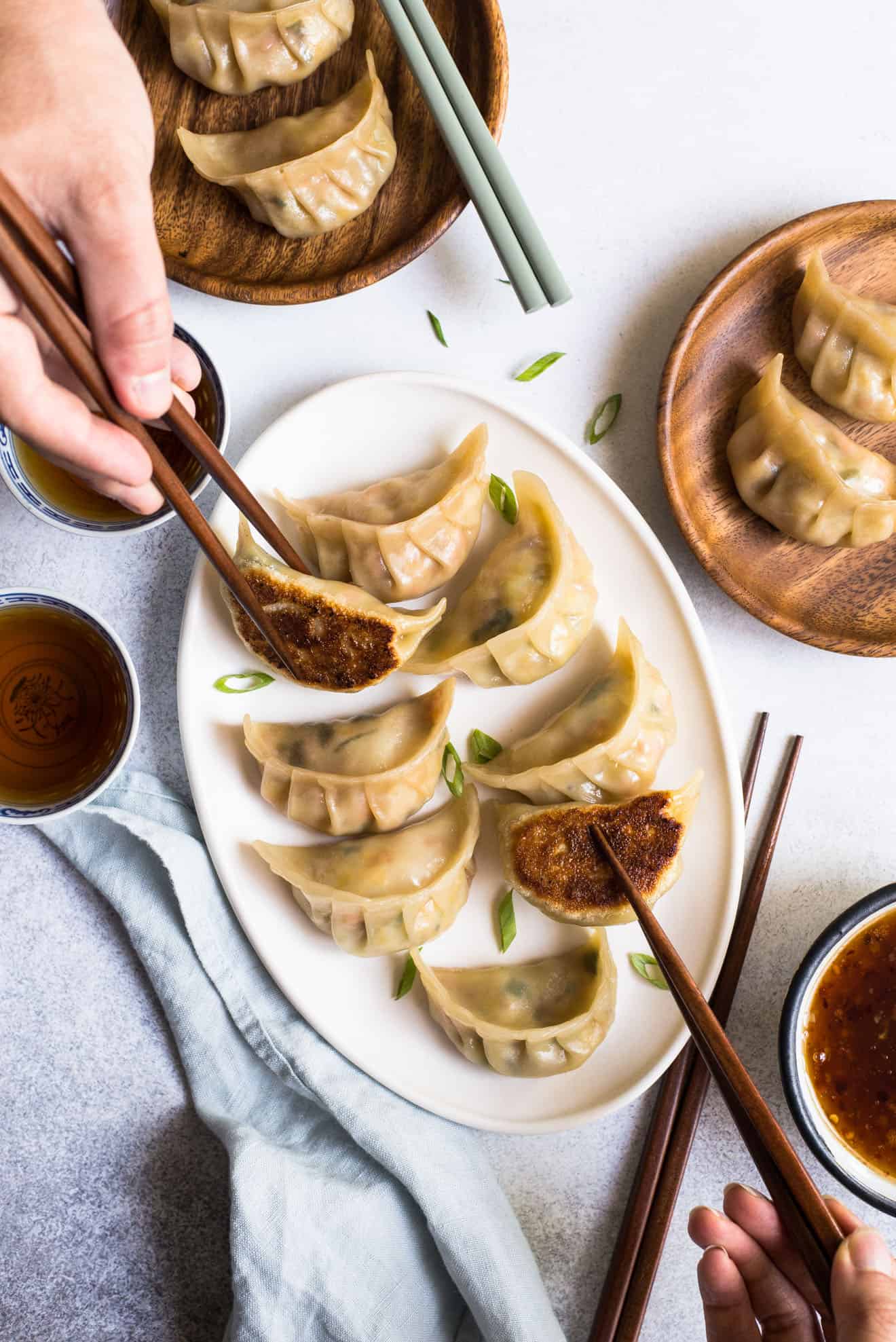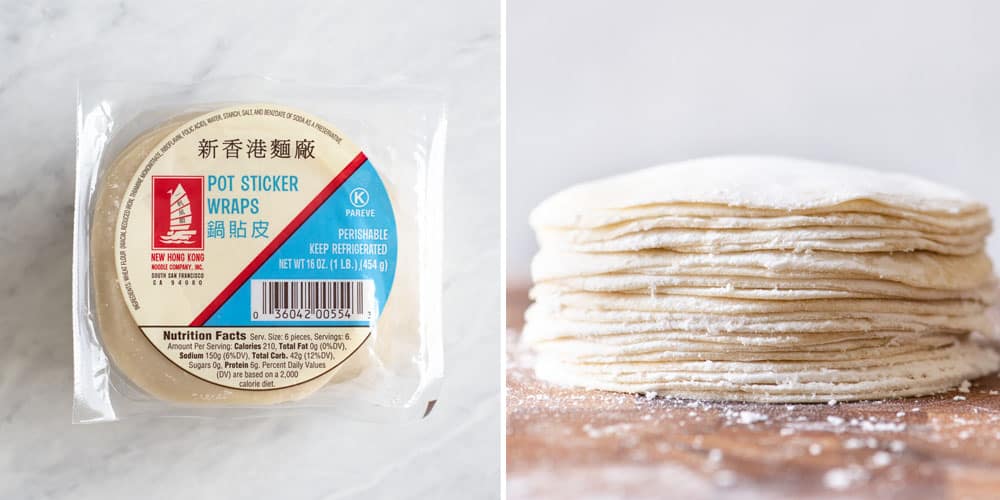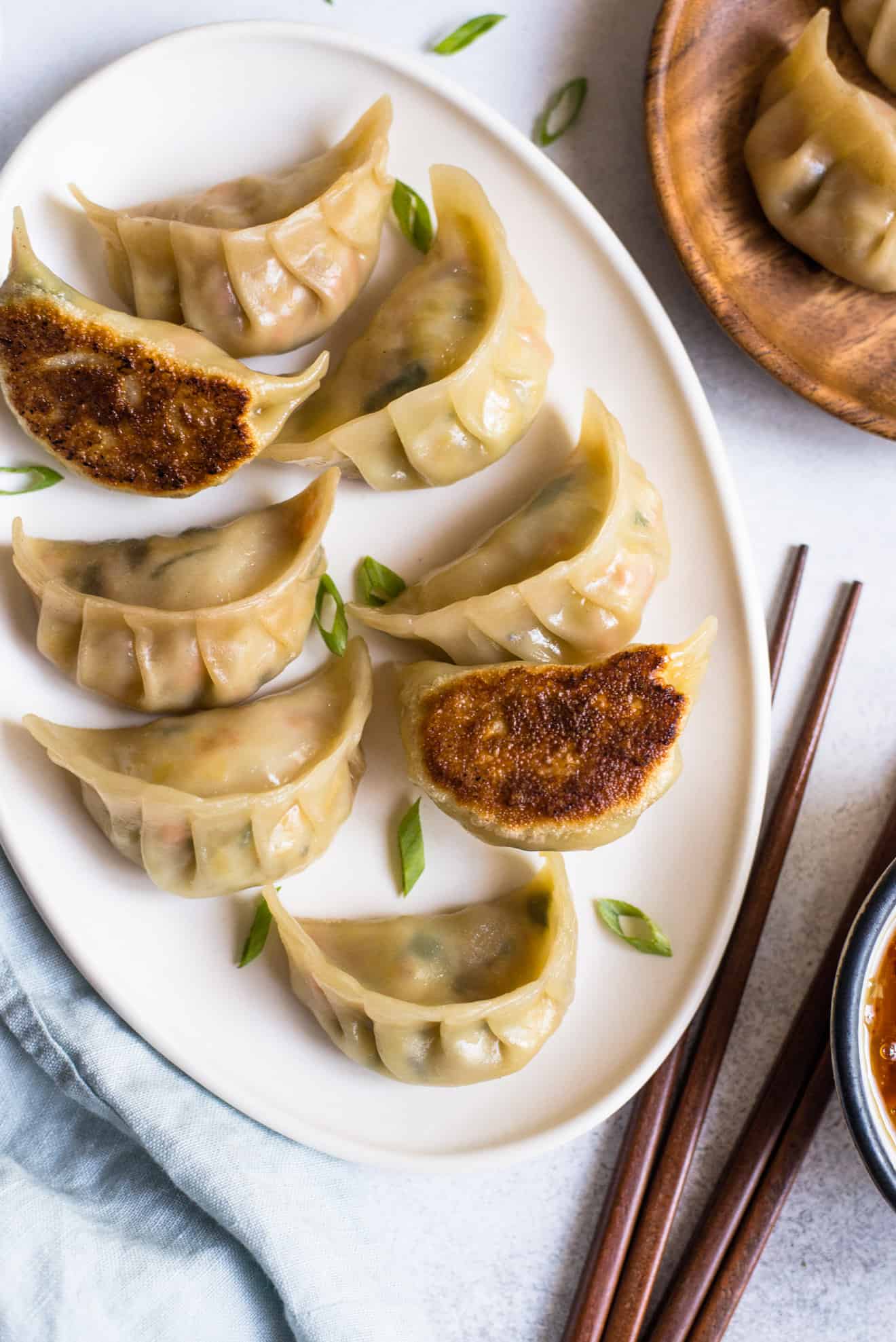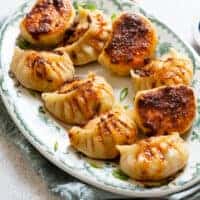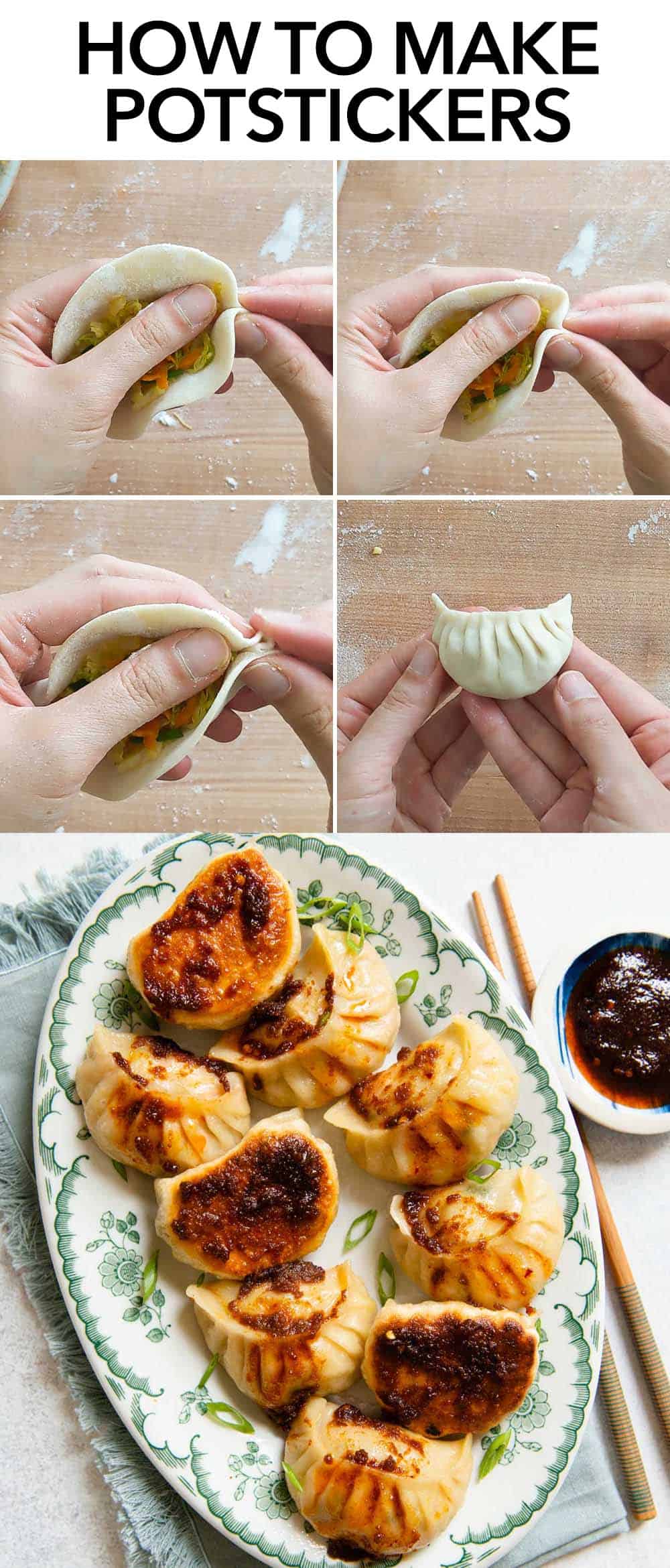Since my college days, I worked hard to perfect my dumpling-making skills. After all my trials and mistakes, I have many tips to share about how to make potstickers.
WHAT ARE POTSTICKERS?
Potstickers are a type of pan-fried dumpling. The word “potstickers” is a literal translation of the Chinese term 鍋貼 (guotie), “guo” meaning “pot” and “tie” meaning “to stick.” (Note: “guotie” is the Mandarin pronunciation; “wo teep” is the Cantonese pronunciation.) During the cooking process, the dumplings stick slightly to the pan, creating a nice crispy texture on the bottom of the dumpling. You might also find potstickers labeled as 煎餃 (jianjiao), which means “pan-fried dumpling.” Most commonly, potstickers are filled with pork and cabbage. You can find my pork and cabbage potsticker recipe here. There aren’t many good vegetarian potsticker recipes out there, so I thought I’d develop one with cabbage, carrots, and garlic chives. These dumplings taste so good! Feel free to modify the filling to your liking.
HOW TO MAKE POTSTICKERS
DUMPLING WRAPPERS/SKINS
Many people tend to buy dumpling wrappers from Asian grocers for convenience. However, you can be easily overwhelmed by all the choices of dumpling skins at the Asian supermarket. There are circular dumpling wrappers, square-shaped wrappers, wrappers made with egg, and wrappers with varying thicknesses.
In general, I like using thicker wrappers for potstickers, like the ones from New Hong Kong Noodle Company, which you see in the photo above, left. These thicker wrappers can withstand heat better during the cooking process, so your dumplings won’t burst open. You can also use “gyoza wrappers” to make potstickers. However, note that they are usually thinner, so you won’t need to cook the dumplings as long. If you are following the recipe below, reduce the cooking time by 1 minute. You can usually find dumpling wrappers in the refrigerated sections of Asian supermarkets. Oftentimes, they’re located near the tofu section. When buying wrappers, inspect to make sure that you’re able to see the individual dumpling skins. In other words, you don’t want to buy a package where the individual wrappers are clumped or smashed together into a solid block. They tend to be difficult to separate and you’ll likely stretch them out as you pull them apart. You can also make fresh dumpling wrappers! My dumpling wrapper recipe is great for making potstickers. The tutorial includes extensive tips on how to make dumpling wrapper dough and how to roll out individual wrappers, so be sure to check it out! If you use store-bought wrappers, you’ll need to wet the edges of the wrappers with water in order for them to seal properly. In general, freshly made wrappers do not require additional water to seal.
DUMPLING FILLING
Pork and cabbage is probably the most popular filling for potstickers. If you don’t eat pork, you can try my chicken potsticker recipe here. Below, I have outlined a mixed vegetable potsticker recipe, which features cabbage, carrots, shallots, and garlic chives. If you want another vegan option, try my tofu and kimchi dumplings.
PLEATING POTSTICKERS
There are many ways to pleat potstickers. The video below shows you a basic potsticker pleating method. If you are a beginner, make wider pleats until you are familiar with how you should hold the dumpling during the pleating process. Once you’ve mastered the wider pleats, you can start making narrower ones. For more ways to pleat dumplings, check out the posts below:
Pork & Cabbage Potstickers (inverted “v” shape)Tofu & Kimchi Dumplings (fan shape)Red Curry Tofu Dumplings (braid)
One thing to note is that the edges of dumpling wrappers tend to dry out easily. If you are making dumplings on your own, cover the wrappers with a dry cloth as you work.
COOKING POTSTICKERS
Because the potstickers stick to the pan as they cook, you want to make sure to use the right pan for frying them. Many recipes I’ve seen online suggest using nonstick pans, but I prefer cooking them in a well-seasoned cast iron skillet. I have found that potstickers blister more in a cast iron pan, yielding dumplings with crispier bottoms. Regardless of whether you use a cast-iron or nonstick skillet, make sure that the skillet has a fitted lid. Typically, you cook potstickers through a combination cooking technique that pan fries and steams the dumplings simultaneously. You’ll need to cover the skillet with a lid to make sure that the dumplings steam properly.
DIPPING SAUCES
I love eating potstickers with dipping sauces. Here are some of my favorite sauces to serve with dumplings:
Soy & Vinegar Dumpling SauceSweet Chili SauceChili Oil
HOW TO FREEZE POTSTICKERS
If you want to cook the potstickers at a later time, freeze them. DO NOT refrigerate raw potstickers. The moisture from the filling will seep into the wrappers, causing the dumplings to turn soggy and lose their shapes. To freeze potstickers, line them on a large baking sheet or several large plates. Once the dumplings are firm, take the dumplings off the baking sheet or dish and store them in a freezer bag. To prevent frozen dumplings from being stuck onto the baking sheet or plates, line the baking sheets with parchment paper before placing the dumplings on top. For more information on how to freeze dumplings and how to cook frozen dumplings, check out my post here. Note: This post was originally published on August 22, 2017 and updated on August 23, 2020.
